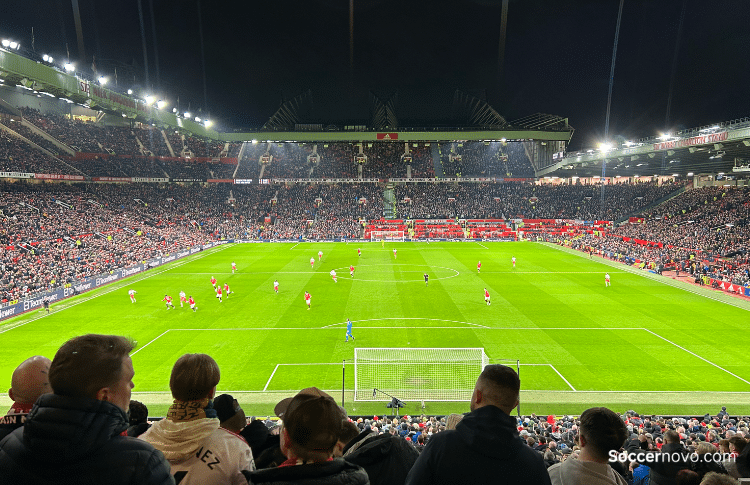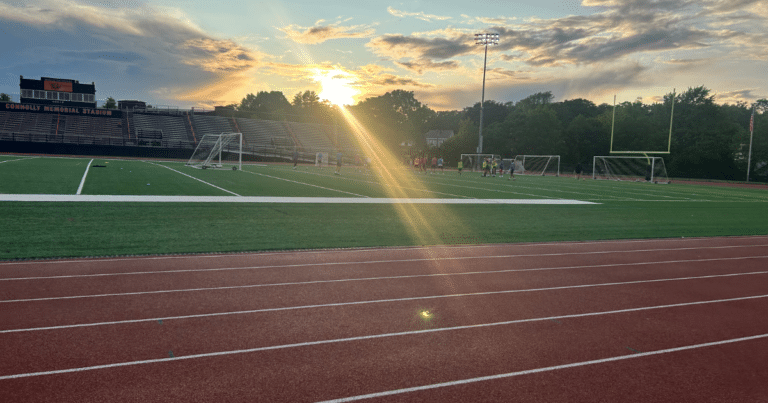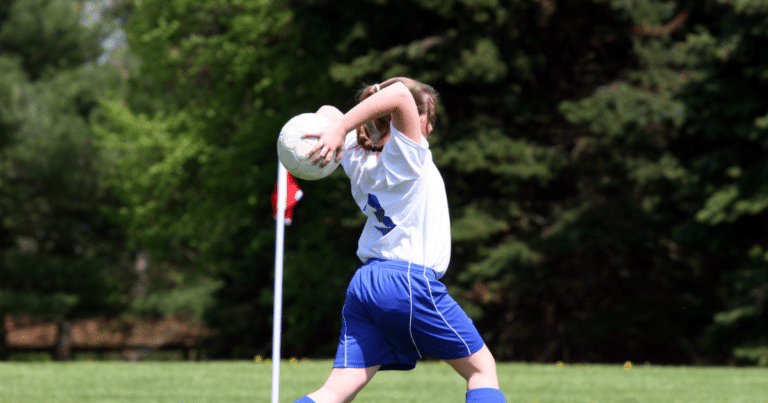Header in Soccer: Start Executing Them Better
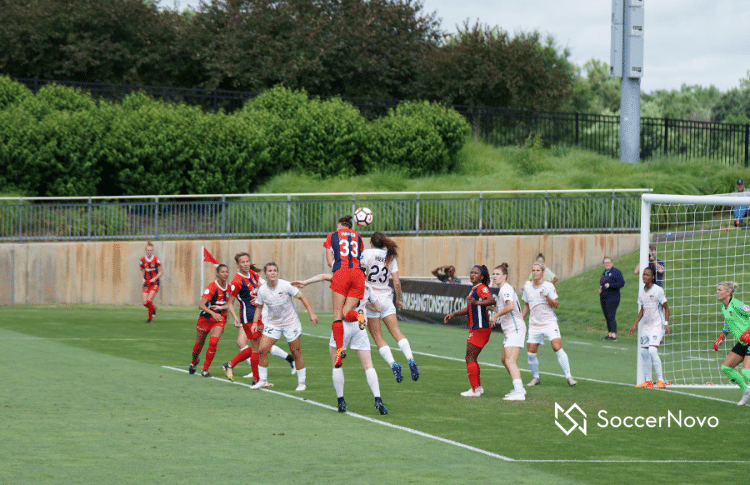
A header in soccer has its time and place in the game. This move involves using your head to control or redirect the ball, and it’s a fundamental skill for players over 10 years of age.
While headers can be incredibly effective, they can also be dangerous if not executed properly.

In this article, we’ll take a closer look at the header in soccer, exploring its history, technique, and potential risks.
Understanding Soccer Headers
What is a Header in Soccer?
A header is a technique used in soccer to make contact with the ball using the head. It is commonly used during a game to pass, shoot, or clear the ball. Headers are typically executed when the ball is in the air, such as during a corner kick, free kick, or a long pass.
Headers can be performed by any player on the field, but are most commonly used by defenders and forwards. It requires good timing, coordination, and technique to execute a header properly.
Techniques of Executing a Header
There are different techniques used to execute a header in soccer. The most common techniques are the basic header, diving header, and glancing header.
Basic Header
The basic header is the most common technique used in soccer. To execute a basic header, follow these steps:
- Approach the ball with your eyes on the ball.
- Swing your arms and elbows back to create momentum in your body.
- Make contact with the ball using the forehead.
- Keep your eyes open and head steady to direct the ball to the desired location.
Diving Header
The diving header is a more advanced technique (and more dangerous) used in soccer. It is typically used to score a goal or clear the ball out of danger. To execute a diving header, follow these steps:
- Approach the ball with speed and dive forward towards the ball.
- Make contact with the ball using the forehead while in mid-air. Use your takeoff as momentum to strike the ball harder.
- Keep your eyes open and head steady to direct the ball to the desired location.
Glancing Header
The glancing header is a technique used to redirect the ball in a different direction. It is typically used to pass the ball to a teammate or to score a goal. To execute a glancing header, follow these steps:
- Approach the ball at an angle.
- Make contact with the ball using the side of the forehead. Oftentimes, you’ll have to swipe your head sideways to get the forehead on it.
- Use the momentum of the ball to redirect it to the desired location.
Importance of Headers in Soccer
Headers are used both offensively and defensively, and can often be the difference between winning and losing a game. Let’s break these down even further.
Defensive Headers
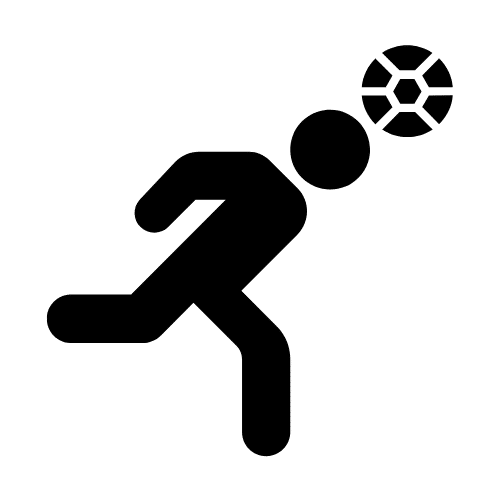
Defensive headers are used to clear the ball away from danger. When the ball is crossed into the box, defenders must be able to jump and head the ball away from their own goal. If the ball isn’t headed, it could be volleyed in or played from the ground which creates dangerous scenarios for the defense.
This requires good timing and positioning, as well as the ability to generate power in the header.
A well-executed defensive header can prevent an opposing team from scoring a goal.
Offensive Headers
Offensive headers are used to score goals and pass the ball. When a cross is sent into the box, attackers must be able to jump and head the ball into the net. This requires good timing, positioning, and technique.
A well-executed offensive header can be a spectacular way to score a goal and can sometimes be the difference between winning and losing a game.
Headers are also important in midfield play. Midfielders often use headers to control the ball and pass it to their teammates. This requires good spatial awareness and the ability to judge the flight of the ball.
Risks and Controversies of Headers
Health Risks in Soccer
Headers in soccer can pose health risks to players, especially with repeated exposure. Studies have shown that frequent headers can lead to brain damage and cognitive impairment, particularly in youth players whose brains are still developing. This has led to concerns about the long-term effects of headers on the brain and has prompted calls for more research into the issue.
In fact, one such study from High School ROI states that “Heading generally accounts for approximately 30% of soccer concussions across sexes and in high school and middle school players,” according to the research team. The remaining 70% of concussions occur during other activities, such as defending, goal tending or chasing loose balls.”
In addition to brain damage, headers can also cause neck and spine injuries. This is especially true for players who do not execute the technique correctly or who collide with other players while attempting a header.
It’s often overlooked but players should be trained on proper technique and should be aware of the risks involved in heading the ball.
Rules and Regulations
The use of headers in soccer has been a subject of debate among players, coaches, and governing bodies.
Some argue that headers are an essential part of the game and should not be restricted, while others believe that they pose too great a risk to players and should be banned altogether.
Currently, there are no official rules or regulations in place regarding headers in soccer. However, some youth leagues have implemented restrictions on headers in response to concerns about brain damage.
Additionally, some professional players have called for more strict regulations on headers, such as limiting the number of headers per game or implementing age restrictions.
Training for Headers [13 Years Old and Older]
If you want to improve your skills in soccer headers, you need to train regularly. Here are some tips to help you improve your headers:
Skills Development
Practice Proper Technique
To develop your header skills, you need to practice proper technique. Here are some tips to help you:
- Keep your eyes open and focused on the ball
- Use your forehead to strike the ball
- Make contact with the ball at the hairline
- Keep your neck muscles relaxed
- Use your arms for balance
Improve Your Timing
Timing is crucial when it comes to headers. You need to learn how to time your jump and head the ball at the right moment. Here are some tips to help you improve your timing:
- Practice jumping and heading the ball at different heights
- Work on your reaction time
- Use cones or markers to simulate game situations
Increase Your Power
To score a goal with a header, you need to have power. Here are some tips to help you increase your power:
- Build up your neck muscles with exercises like neck bridges and resistance training
- Practice jumping and heading the ball with a weighted vest or ankle weights
- Work on your core strength with exercises like sit-ups and planks
Safety Measures
Header training can be dangerous if not done safely. Here are some safety measures to keep in mind:
- Always use proper technique to avoid head and neck injuries
- Use the right size ball for your age and skill level
- Avoid practicing headers in bad weather conditions
- Practice basic headers first (don’t dive)
By following these tips and safety measures, you can improve your header skills and reduce the risk of injury.
Headers in Youth Soccer
When it comes to playing soccer, headers are an essential part of the game. However, when it comes to youth soccer, the use of headers is a controversial topic. In this section, we will explore the use of headers in youth soccer.

The Controversy
The controversy surrounding the use of headers in youth soccer stems from concerns about the potential risk of head injuries. The developing brains of young players are more susceptible to damage from repetitive head impacts, which can lead to long-term health issues.
This I totally get!
Guidelines for Youth Soccer
To mitigate the risk of head injuries, various organizations have developed guidelines for the use of headers in youth soccer.
The United States Soccer Federation (USSF) recommends that players under the age of 11 should not engage in heading the ball during practice or games.
Players between the ages of 11 and 13 should engage in limited heading training, while players over the age of 14 can engage in full heading training.
This is detailed in our article, ‘What Age Can You Head the Ball in Soccer?‘.
Famous Headers in Soccer History
To get you more motivated, here are some awesome headers from professional soccer players over the years!
Frequently Asked Questions
At what age is it safe for players to start practicing heading in soccer?
What are some ways to improve heading technique in soccer?
What are the potential dangers of heading the ball in soccer?

Written By: SoccerNovo
SoccerNovo is an independent youth soccer media brand built to help parents, players, and coaches better understand the game and the pathways available in U.S. soccer. Our mission is to make youth soccer simpler, clearer, and more accessible for everyone involved in it.
Let’s connect


